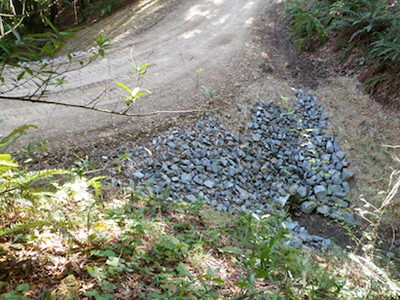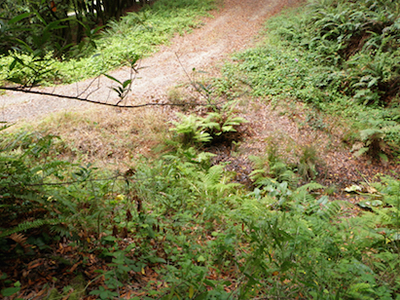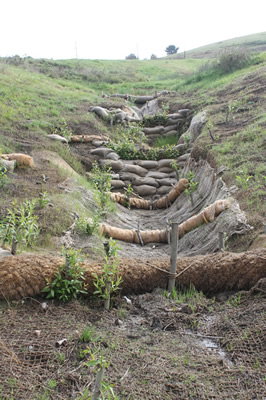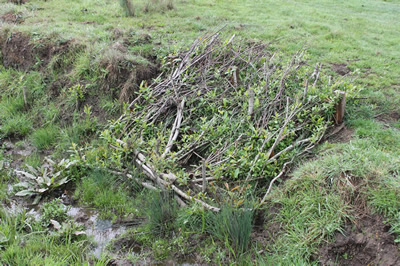Sediment Reduction / Erosion Control


Erosion of rural roads, hillsides, or streambanks is one of the primary concerns of many landowners, threatening drivability or access and threatening topsoil and productive land. Erosion into streams can have severe repercussions for aquatic life, increasing turbidity that affects feeding success and mobility, and increasing nutrient loads that degrade water quality. Fine sediment deposited into spawning gravels can smother salmon eggs.
Much of the grant funding earmarked to address erosion focuses on reducing fine sediment and nutrients into coho-bearing streams. The RCD may be able to assist with other erosion concerns by providing technical assistance and resources; staff can also work with landowners to design and implement erosion control projects on a fee-for-service basis.
 Restoration techniques:
Restoration techniques:
Road repair: Unpaved rural roads seriously impact hydrology and sediment transport across a landscape if built improperly. Roads can be reshaped with rolling dips and out- and in-slopes to manage stormwater discharge across the road. Roadside ditches can be disconnected from streams by frequently draining them through ditch relief culverts. Stream-crossings should be fitted with culverts that allow for healthy stream flow: they should be level with the streambed, sized for storms, and feature flat bottoms for easy fish and widlife passage. Learn more.
Gully Restoration: Gullies form above streams as a result of soil disruption (such as from improper grazing, intense rainfall events, construction activities, etc.) and will continue to incise or unzip if untreated, sending lose soil and sediment into waterways. Not only do gullies lose precious soil resources, they also damage water quality. Restoration techniques include armoring (with boulders or wood) and replanting with strong-rooted plant species. Gullies that are armored or planted will accumulate debris and soil over time, contributing positively to the soil cycle.
 Streambank Stabilization: Stabilizing the banks of streams from erosion reduces the amount of sedimentation entering the waterway and the degradation of the riparian corridor. Riparian habitats are dynamic systems, constantly gaining and losing sediment, wood, and nutrients, but streams that lose these resources too quickly become impaired and this degradation can contribute to poor water quality. Techniques for stabilizing banks include armoring the banks with large woody debris, boulders, erosion control fabric, or woven willow mattresses and by planting the banks with strong rooted plant species.
Streambank Stabilization: Stabilizing the banks of streams from erosion reduces the amount of sedimentation entering the waterway and the degradation of the riparian corridor. Riparian habitats are dynamic systems, constantly gaining and losing sediment, wood, and nutrients, but streams that lose these resources too quickly become impaired and this degradation can contribute to poor water quality. Techniques for stabilizing banks include armoring the banks with large woody debris, boulders, erosion control fabric, or woven willow mattresses and by planting the banks with strong rooted plant species.
Learn More About These Conservation Practices: